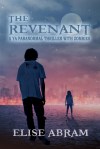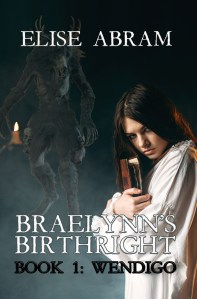Bram Stoker’s Dracula is the gothic horror story that put down roots for modern day vampire lore.
In Dracula, lawyer Jonathan Harker is sent to Transylvania to close a deal on the sale of a house for Count Dracula in England. Confined to a limited number of rooms in Dracula’s castle, Harker goes exploring where he discovers siren-like creatures and Dracula’s dark nature. Harker eventually escapes, goes nearly mad, and convalesces in a hospital where fiance Mina Murray retrieves him and marries him. They return to England to find Mina’s friend, Lucy, mysteriously ill from blood loss. Harker and Dr. Seward enlist a retired Van Helsing for help. They replenish Lucy’s blood nightly to no avail. Eventually Lucy dies, her body claimed by Dracula. It’s not long before Mina falls prey to the same “illness,” with one strange symptom–she has a connection with Count Dracula. Harker, Seward and Van Helsing use this connection to ambush Dracula and kill him for good at last.
Fan of vampire stories that I am, I had always meant to read the original Dracula, but never got around to it. But after watching NBC’s Dracula, I needed to go back to the archetype to see which characters and events were borrowed from the original and which were new.
In NBC’s Dracula, the count assumes the name Alexander Greyson and pretends to be an American newly arrived in England on business. In a grand spectacle opening, Greyson holds a party at his mansion where he introduces his guests to free, wireless power which sends the oil magnates into a tizzy. At this gala is socialite Lucy Westenra who has invited her friend and medical student Mina Murray and Mina’s boyfriend, reporter Jonathan Harker. When Dracula sees Mina he sees his wife’s doppelganger and is determined to have her, but not by force. To that end, he hires Harker as his assistant, puts him up in a mansion and pays him enough to marry Mina and live happily ever after. The idea is to keep Mina close and gradually insinuate himself into her life. Pursued by the Order of the Dragon, an ancient organization whose members are involved in (among other things I can’t figure out) maintaining a power monopoly and killing vampires, Greyson’s goal is to punish members of the Order for their role in making him what he is today.
Other than character names and the time in which the story takes place, there is little comparison between the original book and the television show. In the book, Dracula has no alter ego and there is no mention of Mina the doppelganger. TV’s Renfield is Dracula’s manservant, a far cry from Stoker’s raving, bug-eating lunatic and Stoker’s Van Helsing is out to kill Dracula, not form an unholy alliance with him in order to seek revenge on the Order of the Dragon. Reading the book also shed some light on other supernatural works, including an explanation as to why the brothers on Supernatural bear the last name Winchester and the origin of the title “Vampire Diaries”, adopted because most of Stoker’s novel is told in journal or diary format.
The novel is a page turner at times, boring at others, but worth the time to read.
The series picks up pace midway through episode two and becomes the television version of a page turner. I binge watched the first three episodes and regret not watching the fourth as well (but Once Upon a Time was about to begin and priorities must be set).
Are you watching NBC’s Dracula? What do you think?


















